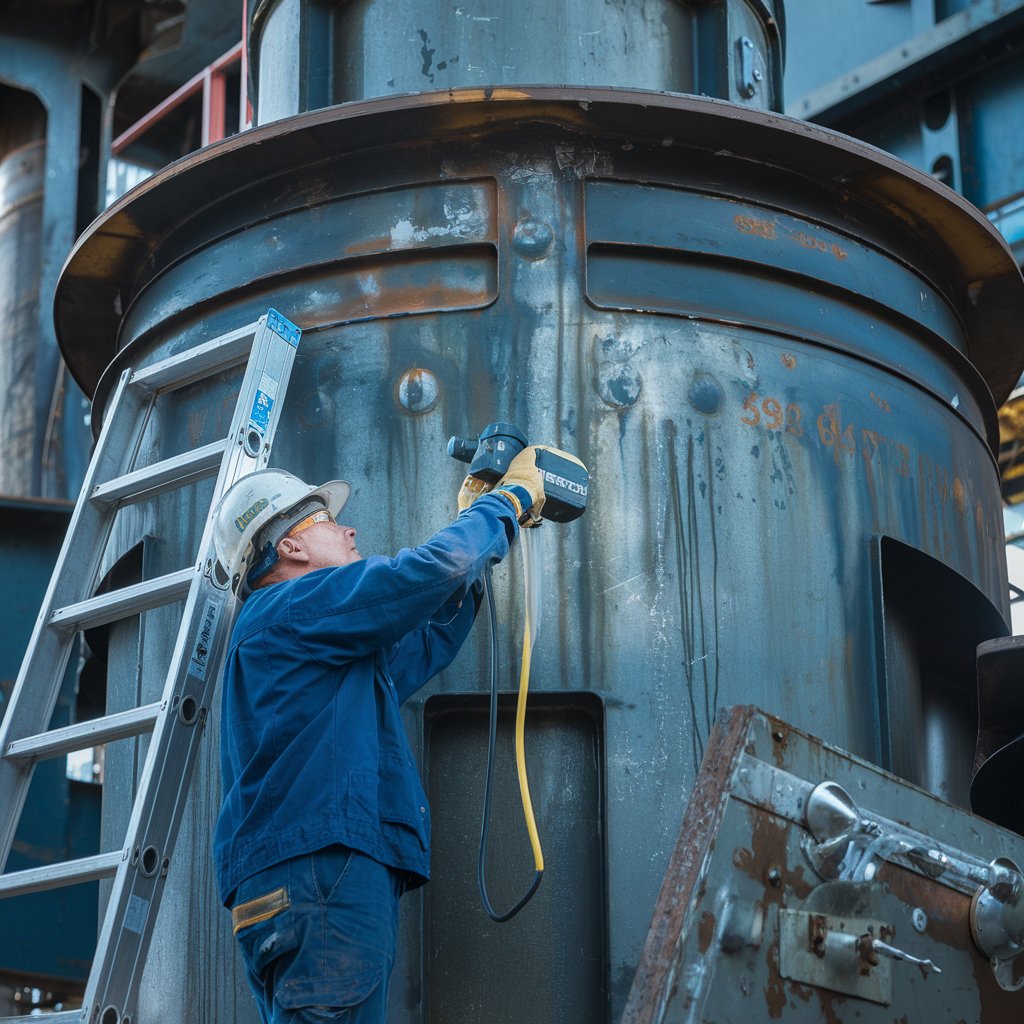Non-destructive testing (NDT) and inspection play critical roles in ensuring the safety, reliability, and quality of materials and structures across various industries, including aerospace, automotive, manufacturing, and construction. As technology evolves and industry demands change, the NDT and inspection landscape is also undergoing significant transformation. This article explores the key trends shaping the future of the NDT and inspection industry.
The NDT and inspection industry is expected to reach USD 18.4 billion by 2029 from 11.6 billion in 2024, at a CAGR of 9.6% during the 2024-2029 period. Various companies are investing in NDT and Inspection which gives an opportunity for growth in the NDT and Inspection industry . The NDT and Inspection industry is continuously developing, with the presence of multiple players. North America is likely to contribute significantly to the growth of the NDT and Inspection industry . Similarly, the Asia Pacific, Europe, and RoW regions are expected to be the growing market for the forecasted period.
1. Integration of Advanced Technologies
A. Artificial Intelligence and Machine Learning
AI and machine learning are set to revolutionize NDT processes. By analyzing large datasets, these technologies can improve defect detection and classification, reduce human error, and optimize inspection protocols. Predictive analytics powered by AI can also anticipate potential failures before they occur, allowing for proactive maintenance and reducing downtime.
B. Automation and Robotics
Automation is increasingly being integrated into NDT processes. Robotic systems can perform inspections in challenging or hazardous environments, such as confined spaces or high-altitude structures, enhancing safety and efficiency. Drones equipped with NDT tools, such as ultrasonic sensors or thermal cameras, are particularly useful for inspecting infrastructure like bridges, wind turbines, and pipelines.
2. Enhanced Data Management and Analysis
A. Cloud Computing
The shift towards cloud-based solutions allows for real-time data storage and access, enabling better collaboration among teams. Inspectors can upload findings instantly, and stakeholders can access the data from anywhere, facilitating quicker decision-making and improving project timelines.
B. Big Data Analytics
As NDT technologies generate vast amounts of data, big data analytics will become essential for processing and interpreting this information. Advanced analytics can reveal patterns and trends that were previously undetectable, helping organizations improve their inspection strategies and enhance overall quality assurance.
Download PDF Brochure @ https://www.marketsandmarkets.com/pdfdownloadNew.asp?id=882

3. Development of New Inspection Techniques
A. Emerging NDT Methods
The future will likely see the development and adoption of innovative NDT methods. Techniques such as digital radiography, laser-based inspection, and electromagnetic testing are gaining traction for their ability to provide high-resolution data and reduce inspection times.
B. Hybrid Inspection Systems
Combining multiple NDT methods into hybrid systems can enhance detection capabilities and provide a more comprehensive analysis of materials. For instance, integrating ultrasonic testing with visual inspections can offer a more thorough understanding of structural integrity.
4. Focus on Sustainability and Environmental Concerns
As industries strive to meet sustainability goals, NDT practices are evolving to minimize environmental impact. The future will see an emphasis on using eco-friendly inspection materials and methods. Additionally, more companies will seek NDT solutions that reduce waste and energy consumption during the inspection process.
5. Increased Regulatory Compliance and Standards
With growing awareness of safety and quality in industries such as aerospace and oil and gas, regulatory bodies are likely to introduce stricter compliance standards. The NDT industry will need to adapt by implementing more rigorous inspection protocols and staying updated on evolving regulations. This shift will necessitate continuous training and certification for NDT professionals.
6. Globalization of NDT Services
As companies expand globally, there is a rising demand for standardized NDT services across different regions. Organizations will seek vendors that can provide consistent quality and adherence to international standards. This globalization will also lead to increased collaboration between companies and NDT service providers, fostering innovation and knowledge sharing.
7. Workforce Development and Skill Enhancement
As technologies advance, there will be a growing need for skilled professionals capable of operating sophisticated NDT equipment and interpreting complex data. Training programs will evolve to incorporate new technologies, ensuring that the workforce is equipped to meet the demands of the industry. Online training platforms and virtual reality simulations are expected to become more prevalent, offering flexible learning opportunities.
The NDT and inspection industry is on the brink of significant transformation, driven by technological advancements, regulatory changes, and evolving industry needs. By embracing these trends—such as automation, AI integration, and sustainable practices—organizations can enhance their inspection processes, improve safety and quality, and maintain a competitive edge. As the landscape continues to evolve, staying ahead of these trends will be crucial for professionals and organizations alike, ensuring the continued reliability and safety of materials and structures across all sectors
NDT and Inspection Companies : Key Players
The report profiles major players in the NDT and Inspection industry are General Electric (US), MISTRAS Group (US), Olympus Corporation (Japan), Ashtead Technology (Scotland), Nikon Metrology NV (UK), SGS Société Générale De Surveillance SA, (Switzerland), Magnaflux (US), Eddyfi Technologies (Canada), Sonatest (UK), Intertek Group plc (UK), Applus+ (Spain), Bureau Veritas (France), Comet Group (Switzerland), TUV Rheinland (Germany), FISCHER TECHNOLOGY INC. (US), Acuren (US), CREAFORM (Canada), Vidisco Ltd. (Israel), DEKRA (Germany), Team, Inc. (US), Labquip NDT (US), Cygnus Instruments Ltd. (UK), FPrimeC Solutions Inc. (Canada), Carestream Health (US), and Element Materials Technology (UK).
